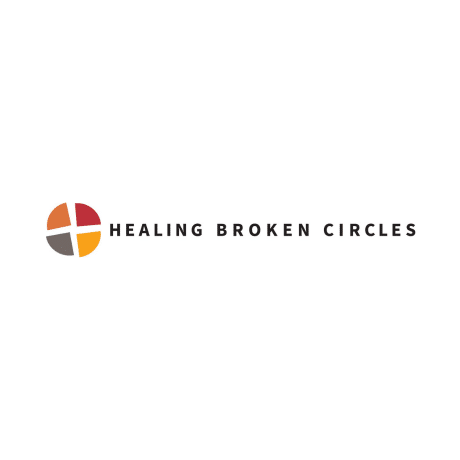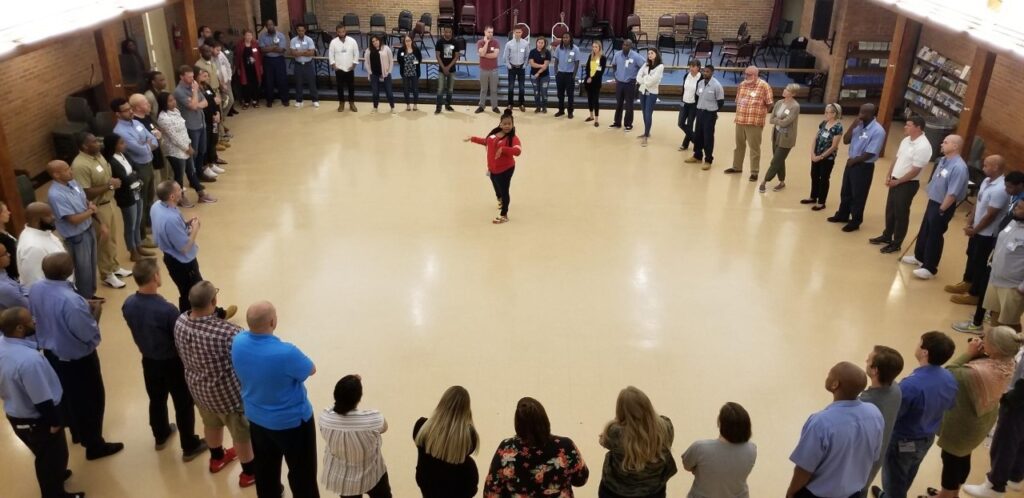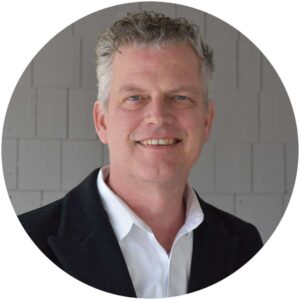Client Case Study
Subject to Change: Healing Broken Circles Empowers Inmates’ Transformation from the Inside Out
For more than 15 years, Healing Broken Circles has operated a Community Center inside Ohio’s Marion Correctional Institution, to help individuals heal, learn, and thrive. Out of MCI’s prison population of 2,500, HBC has regularly served more than 500 individuals, and offers more than 30 programs, workshops, and events each year. HBC has become part of the fabric of MCI, and beyond its programs, has been instrumental in bringing in Piper Kerman, author of Orange is the New Black, who started a writing program at MCI, as well as at the Ohio Reformatory for Women (ORW). HBC also established a relationship with Otterbein University, brought in KUJI Men’s Chorus, and recruited professors from The Ohio State University as volunteers, some of whom have since started up the Ohio Prison Education Exchange Project (OPEEP), offering classes in Ohio prisons.
“We were struggling with capturing in data how individuals are lifting one another up and learning new ways of simply being in the world,” said Kendra Hovey, executive director of Healing Broken Circles, Inc. “We also wanted to measure the degree to which their relationships and communication skills improve, and how their perceptions of their own abilities change over time. We knew all of these things contribute to successful outcomes, but we were convinced that in a prison environment, some of the more traditional measures simply wouldn’t work.”
In 2018, Kendra Hovey, executive director of Healing Broken Circles, Inc. (HBC), and her team partnered with Measurement Resources Company to design survey instruments that would help the organization capture the impact its programs were having on its clients.
“Sometimes at the beginning of a program, individuals who are new to the Community Center will sit with the group, but physically isolate themselves,” said Kendra. “But by the end of the program, these individuals’ demeanors have visibly changed. You can see and feel it—they’re more open, engaged, and present. They respond to people that they otherwise would not have spoken to due to an environment where differences between people tend to be amplified.”
Inside HBC’s Community Center—a space where these individuals can feel safe enough to be vulnerable and express their needs—those differences crumble. But even with this supportive community, the path to personal growth can be volatile; and setbacks are interspersed throughout an individual’s overall progress. Measurement Resources provided the HBC team guidance on how to ask the right questions that would uncover the insights HBC needed to advance and improve the content and quality of its programs.
“A lot of what we do is address past trauma,” said Kendra. “Yet, there is a lot of active trauma occurring in prison. So capturing all of the progress, while also taking the realities of the prison system into account has been extremely helpful. Inmates have so little control over their world, so some of the traditional measures, we just assumed wouldn’t tell us anything. But Measurement Resources helped us to get out of our own assumptive thinking, and guided us through the process of measuring the quality of life and personal growth impacts.”
HBC implemented the new surveys in fall of 2019, but with the rise of COVID-19 in early 2020, HBC team members were given only an hour’s notice to pack up and leave the Marion facility. Even in August 2021, visitation hasn’t fully returned for Ohio prisons. Additionally, leadership changes within the facility, along with the rise of the Delta variant, leave much uncertainty as to when HBC staff will be able to resume its programs. Until more becomes known, HBC is relying on the strength of the culture of the Community Center and the inmate leadership team members who have emerged, stepping up to continue HBC’s mission work from the inside.
Pandemic Spurs Renewed Focus on Reentry Experiences
In late 2020, HBC received a grant from the Ohio Arts Council that allowed the organization to partner with Measurement Resources again throughout the first half of 2021. In addition to providing programs inside MCI, HBC has also established a supportive community for individuals who have been released. HBC worked with Measurement Resources to prepare questions for the organization’s series of solution-building conversations, designed to learn more about the reentry experience—to pinpoint what was or wasn’t helpful, and to solicit ideas about how needs could be better met for others in the future.
“Measurement Resources advised us on how to frame the questions, so that we could drill down to the information we needed,” said Kendra. “Measurement Resources also gave us the good advice to have both a conversation and a survey—to make the questions available in both forms.”
HBC hosted three information-gathering conversations that were focused on challenges, but the participants intuitively shifted the conversation toward the generation of potential solutions. HBC hosted two additional conversations that focused more on the specifics of potential solutions.
“From these conversations, the elements that are needed for successful reentry became very clear,” said Kendra. “Long before prison, opportunities were simply not in these individuals’ worlds. Yet, the passion, commitment, and ‘all-in-ness’ of those who’ve been through the system, and who have been through the destabilizing experience of reentry—their resolve to help others through that process is astounding.”
In fact, one question HBC never had the chance to ask participants during these conversations was: “If this solution is something the world needs, our community needs, what’s your interest in playing a part?” Unsolicited, participants offered: “What are we going to do next?” and “What can we do now to be there for people, because this is needed.”
The Future Vision is Prevention
Until COVID hit, a core part of HBC’s identity and work had manifested in its in-prison programs. Reimagining what the organization’s services might become on the outside continues to be unchartered territory. While Kendra acknowledges the importance of HBC programs, she is emphatic that the individuals, whether incarcerated or on the outside, will always be the compass of the organization, because of their passion and commitment to help each other.
“They know how to work with people, and they know what people need,” said Kendra. “They can see things that others can’t, like when someone’s not saying something, they can see that and pull it out in a way that doesn’t put that person on the spot. There’s just this whole amazing skillset that the world needs more of, and HBC provides a framework for them to do this work.”
Despite COVID, HBC continues to pass new milestones, having recently launched a storytelling program for people in reentry. After being silenced while serving their sentences, this program is designed to support people in taking back their voices. Also, with support from the Association for Financial Counseling & Planning Education (AFCPE), HBC has piloted a new financial wellness program, which provides a small stipend and financial counseling for those starting their reentry journeys. HBC has even hired its first individual who was part of the leadership team while incarcerated—Michael Powell, director of outreach and new initiatives for HBC. What’s more, he was recently accepted into AFCPE’s financial counseling certification program. His application triggered AFCPE to create a policy for case-by-case review for future applicants who have a prior conviction. Upon completion, he will offer financial counseling as a part of HBC’s reentry offerings. But the pipe dream for HBC continues to be a physical hub that serves as a community center for people reentering, but also a place for prevention.
“So many of these men have such a strong commitment and passion to prevent young people from following in their footsteps,” said Kendra. “And they have a legitimacy to them and the know-how in terms of reaching and engaging youth. All of this became so clear to us from our conversations—the need, how it would be done, the importance of relatability, and how those who’ve been through these extremely unique experiences of incarceration and reentry will become the navigators for others.”




